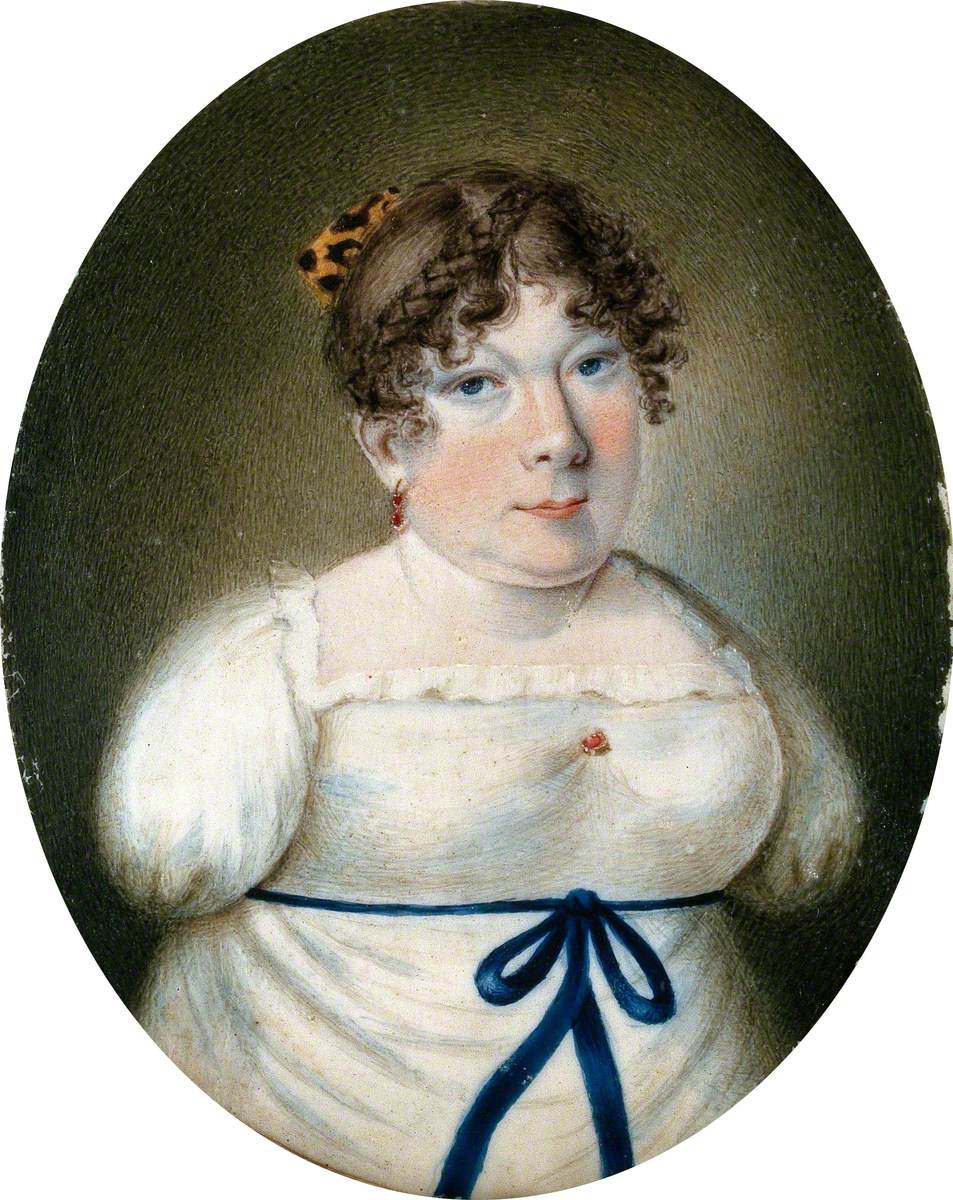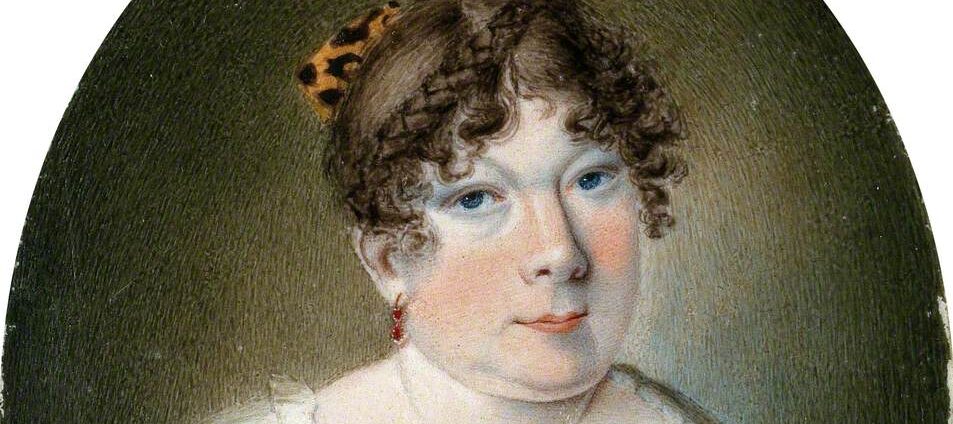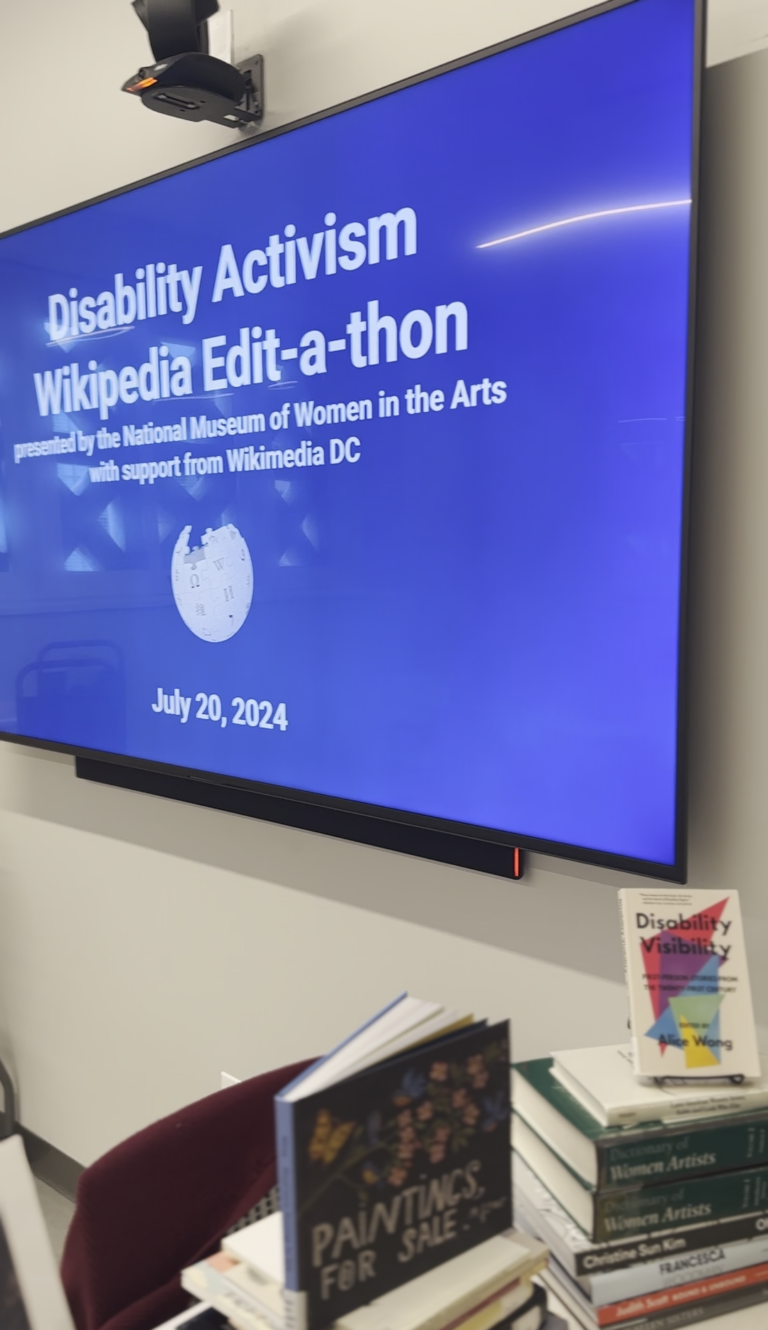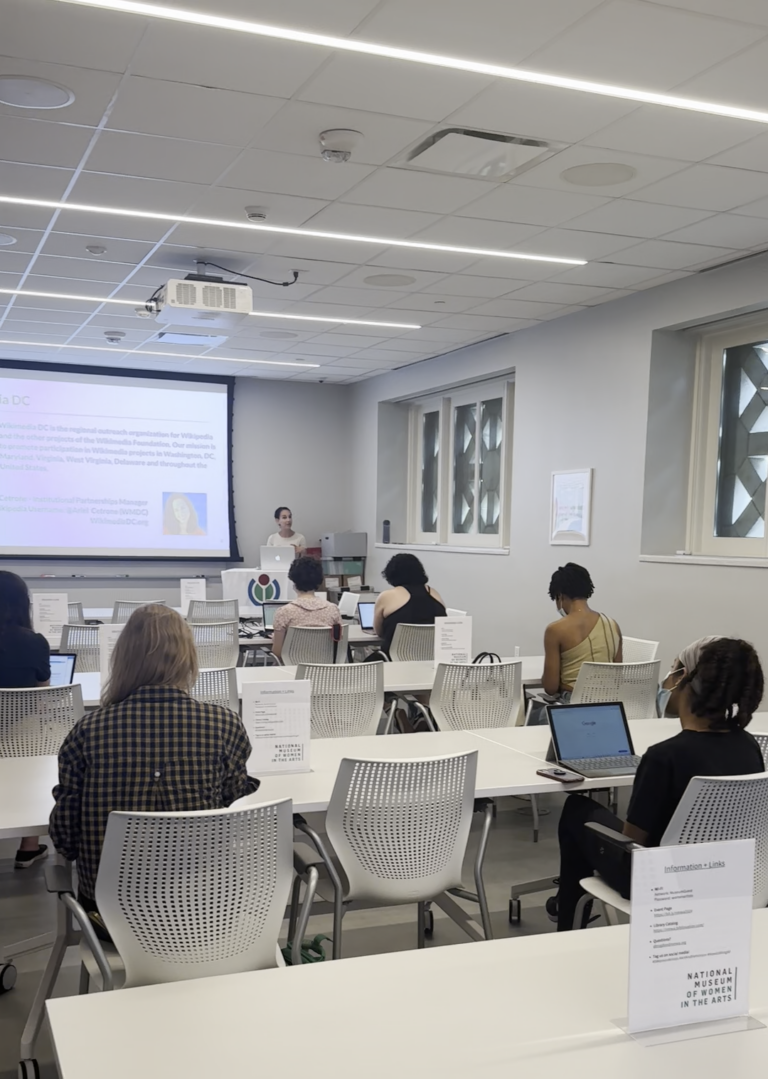On July 20, NMWA’s Betty Boyd Dettre Library and Research Center teamed up with Wikimedia DC for the museum’s annual Art+Feminism edit-a-thon. This year, to complement the museum’s 2024 #5WomenArtists campaign, the event focused on disability activism and advocacy in the arts and was held during Disability Pride Month.
Read on to learn about #5WomenArtists whose Wikipedia pages were created or enhanced at the event by attendees. And to learn more about the event, watch a special segment from NBC4.
1. Sarah Biffen
Biffen (1784 to 1850), an English painter specializing in miniature portraits, was born with no arms and undeveloped legs due to Phocomelia, a congenital condition. She learned to paint by holding the brush in her mouth. Biffen’s family placed her under contract to a man who exhibited her in fairs throughout England; people paid to watch her sew, paint, and write. In 1808, George Douglas, an Earl, saw her painting at a fair and, impressed with her skill, paid for Biffen to attend the Royal Academy of Arts. Volunteers updated her Wikipedia page to note her inclusion in the collection of the Museum of Somerset.

2. Mariam Paré
Paré (b. 1975) is a visual artist, painter, and disability activist. In 1996, while working on her art degree, Paré was shot by an unknown assailant. The injury left her paralyzed. Paré trained herself to paint by holding the brush in her mouth, and she is celebrated for her skillful technique. She says, “I make art based on the disability experience. I make art to better understand myself and the world around me.” Volunteers created Paré’s Wikipedia page.
3. Ángela de la Cruz
De la Cruz (b. 1965) is a Spanish painter and sculptor known for works that are purposely warped. The artist had a stroke when she was two months pregnant and became paralyzed. She now uses a wheelchair in everyday life. De la Cruz continues to create art with the help of assistants. In 2010, she was nominated for the Turner Prize. Volunteers added references to her existing Wikipedia page and edited descriptions of her work for accuracy.
4. Judith Scott
Scott (1943 to 2005) was a fiber artist who, at age seven, was institutionalized due to her Down Syndrome and deafness. After 35 years of separation, Scott’s twin sister, Joyce, overcame legal hurdles to become her legal guardian. Joyce enrolled Scott in art classes at the Creative Growth Art Center, one of the first organizations in the world to provide studio space and art instruction to disabled people. It was there that Scott fell in love with fiber arts. She became renowned for her sculptures and her work was exhibited in a retrospective at the Brooklyn Museum in 2014. Volunteers added references to her existing Wikipedia page.
5. Jaklin Romine
Romine (b. 1985) is a multidisciplinary artist whose work focuses on family, accessibility, and trauma. Romine became a full-time wheelchair user after suffering a spinal cord injury at age 21. In 2022, Romine performed her most popular work, ACCESSED DENIED (2015 to ongoing), at the United Nations during the International Day of Persons with Disabilities. The work highlight’s the inaccessibility of art spaces in Los Angeles. Volunteers created Romine’s Wikipedia page.


